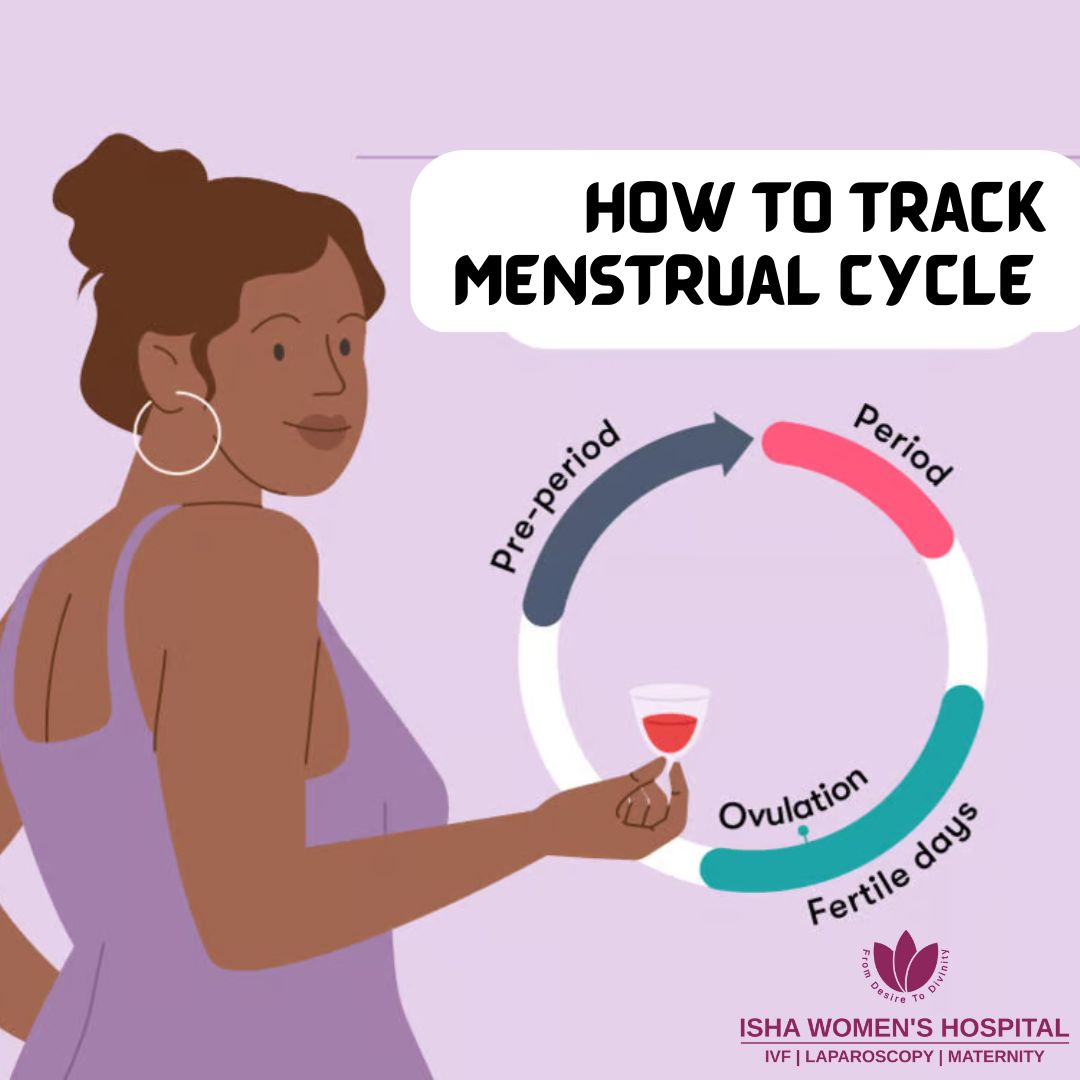How to Track Your Menstrual Cycle for Better Health

What Is the Menstrual Cycle & Why Does It Matter?
Why Is the Menstrual Cycle Important?
Understanding the menstrual cycle is important for several reasons:
- Fertility Awareness: Helps in knowing the most fertile days for conception.
- Hormonal Health: Irregular cycles can signal hormonal imbalances or health conditions.
- General Health Indicator: Changes in your cycle can be an early sign of issues like PCOS, thyroid problems, or stress-related concerns.
- Family Planning: Knowing your cycle helps with natural contraception or pregnancy planning.
The Four Phases of the Menstrual Cycle
- This phase begins when the uterine lining (endometrium) sheds, leading to menstruation (period).
- Blood and tissue exit the body through the vagina, typically lasting 3-7 days.
- Hormone levels (estrogen and progesterone) are at their lowest, which may cause fatigue or mood swings.
- Proper hydration, a balanced diet, and adequate rest can help alleviate discomfort.
- The body prepares for ovulation as the pituitary gland releases follicle-stimulating hormone (FSH).
- Estrogen levels rise, stimulating the growth of follicles in the ovaries, one of which will mature into an egg.
- The uterine lining thickens to prepare for possible implantation.
- This is an ideal phase for high-energy workouts and nutrient-rich diets as estrogen boosts energy and mood.
- Ovulation is the release of a mature egg from the ovary, triggered by a surge in luteinizing hormone (LH).
- This is the fertile window, the best time for conception.
- Some women experience mild pelvic pain (mittelschmerz) or an increase in cervical mucus, which becomes clear and stretchy.
- Tracking ovulation using ovulation predictor kits or basal body temperature can be beneficial for those trying to conceive.
- After ovulation, progesterone levels rise to support a potential pregnancy.
- If fertilization does not occur, progesterone and estrogen levels drop, leading to the start of the next cycle.
- Premenstrual syndrome (PMS) symptoms such as bloating, mood swings, fatigue, and food cravings may occur.
- Managing stress, staying hydrated, and maintaining a balanced diet can help alleviate PMS symptoms.
Why Tracking Your Menstrual Cycle Is Important?
- Tracking helps identify fertile days, making it easier to conceive or use contraception effectively.
- Irregularities in cycle length, heavy bleeding, or missed periods could indicate hormonal imbalances.
- Conditions like PCOS, endometriosis, or thyroid disorders often manifest as menstrual irregularities.
- Seeking medical advice if irregularities persist is crucial for reproductive health.
- Different phases affect energy levels, metabolism, and mood.
- High-intensity workouts are better during the follicular phase, while gentler exercises like yoga are beneficial during the luteal phase.
- Adjusting diet to include iron-rich foods during menstruation and healthy fats for hormone balance can improve well-being.
- Symptoms like severe cramps, very heavy or light periods, and cycle changes can signal underlying health issues.
- Conditions such as PCOS, fibroids, or endometriosis require early diagnosis and medical attention.
- Regular gynecological checkups and open discussions with a doctor help maintain reproductive health.
How to Track Your Menstrual Cycle: Step-by-Step
- Step 1: Record your period start and end date.
- Step 2: Note your cycle length & flow type.
- Step 3: Track PMS symptoms, mood changes, and cramps.
- Step 4: Observe cervical mucus changes for ovulation.
- Step 5: Use basal body temperature (BBT) tracking for fertility awareness.
Best Menstrual Cycle Tracking Apps
1. Clue – Science-backed app with insights into hormones and symptoms.
2. Flo – AI-powered tracker that predicts periods and fertility days
3. Period Tracker – A simple and beginner-friendly app for easy tracking.
4. My Calendar – Allows customization, reminders, and symptom logging.
5. Natural Cycles – An FDA-approved app for natural contraception and pregnancy planning.
These apps help you stay on top of your cycle, monitor your health, and track irregularities.
How to Identify Irregularities in Your Menstrual Cycle
- Short Cycles (35 days) – May indicate hormonal imbalances, stress, or thyroid issues.
- Skipped or Missed Periods – If you miss periods without being pregnant, it could be due to PCOS, weight changes, or excessive stress.
- Heavy or Very Light Bleeding – Heavy bleeding might indicate fibroids or endometriosis, while light periods could suggest low estrogen levels.
- Extreme PMS, Severe Cramps, or Hormonal Acne – Could be linked to hormone fluctuations or conditions like endometriosis.
Tracking your menstrual cycle isn’t just about knowing when your period will come—it also helps you understand your hormone health.
- Identifies low estrogen, progesterone, or thyroid issues – A very short or long cycle can be a sign of a hormonal imbalance.
- Helps manage PMS, period pain, and mood swings – If you experience severe PMS, your cycle tracking can help your doctor recommend treatments like dietary changes or supplements.
- Supports adjustments in diet, supplements, and exercise – If you track your symptoms, you can make lifestyle changes to improve your cycle health.
How to Sync Your Diet & Exercise with Your Menstrual Cycle
Menstrual Phase (Days 1-5): Iron-Rich Foods, Gentle Yoga
- Your body is losing blood, so you need iron-rich foods like spinach, lentils, and red meat.
- Exercise: Go for gentle activities like yoga or walking to avoid fatigue.
- Your estrogen is rising, making you feel energetic—eat protein-rich foods like eggs, chicken, and fish.
- Exercise: This is the best time for strength training and muscle-building workouts.
- Estrogen is at its peak—include healthy fats (avocados, nuts) and fiber in your diet.
- Exercise: You’ll feel your strongest, so high-intensity interval training (HIIT) is great.
- Progesterone levels rise, causing bloating and mood changes—eat magnesium-rich foods (dark chocolate, bananas, almonds).
- Exercise: Opt for light workouts like walking, Pilates, or stretching.
When to Consult a Doctor About Your Menstrual Cycle
If you experience the following, you should seek medical advice:
- Consistently Irregular Cycles – If your cycle is too short, too long, or unpredictable, it could indicate an underlying issue.
- Extreme Cramps & Heavy Bleeding – If your period pain affects your daily life or you bleed excessively, consult a doctor.
- Symptoms of PCOS, Endometriosis, or Hormonal Imbalances – Irregular periods, acne, excessive hair growth, or missed cycles could be signs of a medical condition.
- Fertility Concerns & Pregnancy Planning – If you're trying to conceive and having trouble, tracking your cycle can help your doctor assess your fertility.
Your cycle is more than just your period—it’s a reflection of your hormonal balance, fertility, and overall well-being. If you notice persistent irregularities, severe pain, or unusual symptoms, don’t ignore them! Your body is trying to tell you something. Consulting Dr Chinmay Pataki one of the best gynecologists at Isha Women’s Hospital can help you detect any underlying issues early and receive the best care for your reproductive health.
Your health is in your hands—start tracking your cycle today and take control of your well-being!
Frequently Asked Questions (FAQs)
Ans - Use a period tracking app, a calendar, or a journal to record cycle details.
2. How do I know if my menstrual cycle is irregular?
Ans - If your cycle is shorter than 21 days, longer than 35 days, or unpredictable, it may be irregular.
3. Can tracking my period help me get pregnant?
Ans - Yes! Knowing your fertile window and ovulation date increases pregnancy chances.
4. What are the signs of ovulation?
Ans - Look for clear cervical mucus, a slight rise in body temperature, and mild cramping.
5. When should I see a doctor for menstrual cycle issues?
Ans - If you experience missed periods, extreme cramps, or heavy bleeding, seek medical advice.
